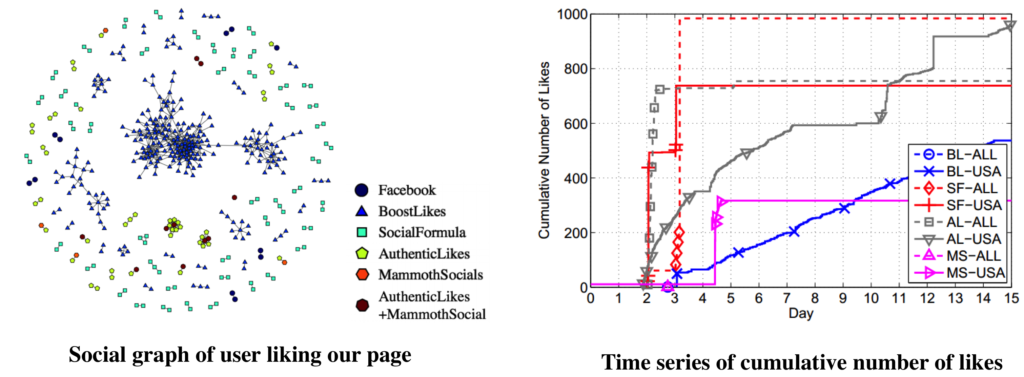Combatting Cyber Frauds
Facebook and other Online Social Networks have become one of primary outlet for advertisements. How can we detect and prevent frauds on these systems and ensure that businesses are getting bang for their buck?

New digital economy models… attracting new forms of cyber-fraud
Objectives
In this project we aim to provide new forms of cyber-defence. This will lead us to offer:
- Fraud detection and cyber-crime prevention in Online Social Networks
- Defence against cyber underground markets activity
- Fake account/activity characterization
Applications
Based on this set of tools, we will be able to provide:
- Fake Likes free analytics for advertisers and brand owners
- Reputation manipulation detection
- Fraud analytics application for operators and users
Results so far
In order to better understand the cyber-fraud ecosystem, we have deployed a pilot study of the fake-likes farms on Facebook as well as the possible effect of this underground market on the legitimate Facebook ads platform. This study was based on the utilisation of 13 honeypots pages.

Based on the likes provenance and time series analysis of these likes we were able to undercover several interesting facts about this underground market:
- 2 temporal behaviours
- Short-time window, likely bot-operated
- Gradually, manual process or deliberately slow to avoid detection
- 2 types of social graph
- Well-connected
- Isolated tuples
- Number of likes per user significantly different from general Facebook population except for one farm

Implications
Based on our observation, it appears that Facebook legitimate ad campaigns get polluted. Allegedly, liking real pages helps fake profiles avoid detection.
